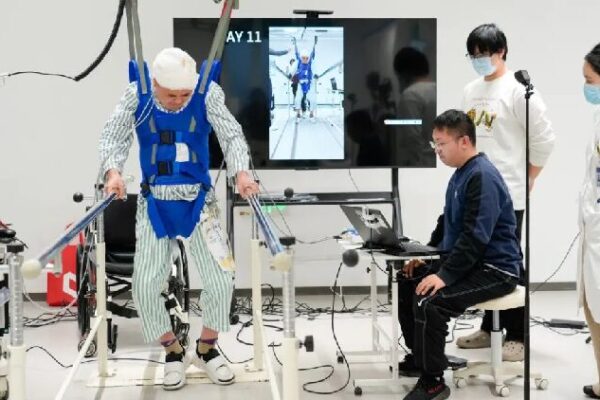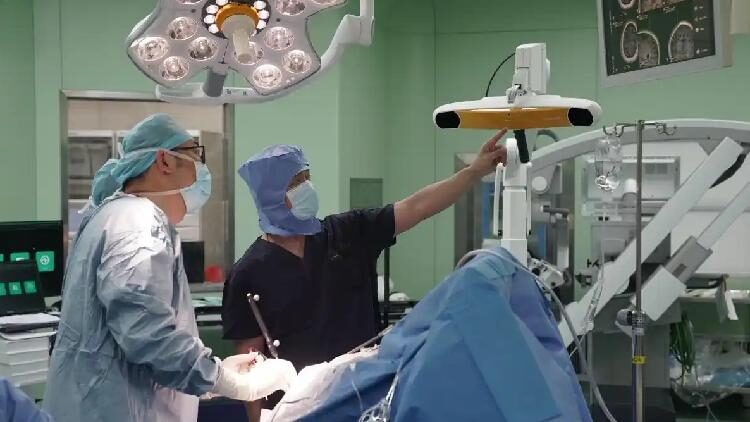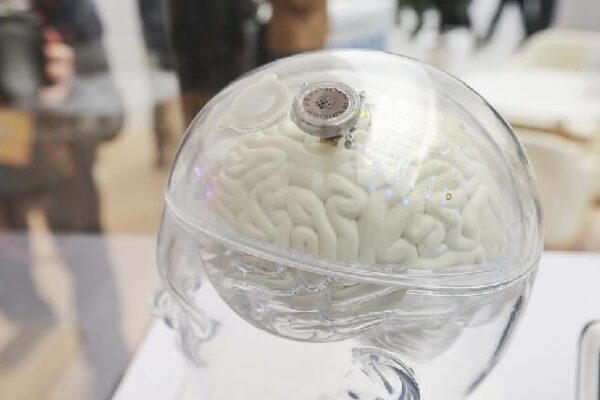In a groundbreaking medical achievement, a team of researchers in the Chinese mainland has successfully implanted a semi-invasive brain-machine interface (BMI) that allows an aphasic patient to communicate in Chinese. This marks a significant leap forward in restoring speech capabilities for individuals who have lost their ability to speak.
The Chinese Institute for Brain Research, Beijing (CIBR), along with the Xuanwu Hospital affiliated with Capital Medical University and NeuCyber NeuroTech (Beijing) Co., Ltd., announced the breakthrough at a press conference on Thursday. Clinical trials demonstrated that over 98% of the BMI channels remained functional after surgery, showcasing the system’s stability and effectiveness.
The NeuCyber Matrix BMI System, developed by CIBR and NeuCyber, is a wireless device featuring a thin, flexible nano-fabricated film microelectrode. It records and processes electrocorticography (ECoG) signals with a high flux of 128 channels. Unlike traditional invasive BMI procedures, this semi-invasive approach places the electrodes on the dura mater—the protective outer layer of the brain—minimizing trauma while capturing high-quality neural signals.
“For the first time, an aphasic patient has been able to output the Chinese language through our semi-invasive BMI system, regaining the ability to communicate,” said Luo Minmin, Director of CIBR. “To accurately interpret patients’ ECoG signals, we utilized key technologies, including a high-integration micro-host for signal processing, advanced wireless communication for data transmission, and real-time algorithms for decoding fine movements and language.”
Earlier this month, Zhao Guoguang, President of Xuanwu Hospital, led a team to perform the world’s first wireless Chinese-language BMI implantation surgery on a patient with amyotrophic lateral sclerosis (ALS). Assisted by a neurosurgical robotic system, the team precisely implanted the BMI system on the left side of the patient’s brain—the region responsible for language processing.
Following the surgery, the patient began language decoding training. Remarkably, after just three hours, the patient’s real-time decoding accuracy for 62 commonly used words reached 34%, later improving to 52%. With the help of an adaptive error correction algorithm based on a large language model, the patient is now able to express basic sentences like “I want to drink water” and “I’m in a great mood today.”
“Brain-machine interface technology can help speech-impaired patients regain their communication abilities,” said Li Yuan, business development director at NeuCyber NeuroTech (Beijing) Co., Ltd. “With synthetic speech technology, what they want to say can even be heard.”
The success of this semi-invasive BMI technology offers a promising, long-term solution for aphasic patients. “Our results suggest that this approach can expand the boundaries of neurological disease diagnosis and treatment,” Zhao stated. “We will continue to explore BMI-powered clinical practices for conditions like intractable epilepsy, spinal cord injury, stroke, ALS, and aphasia.”
This breakthrough not only highlights advancements in BMI technology but also brings hope to countless individuals suffering from speech and motor impairments.
Reference(s):
cgtn.com







